- 02 9712 1736
- [email protected]
- 212 Great North Road, Five Dock, NSW 2046
- Open 7 days a week
Walking, can it help you avoid back pain? That’s the critical question for many patients seeking relief from this common condition. In this article we look at the evidence, highlighting the potential of walking as a tool for spinal health and pain avoidance. We will give you practical, actionable insights about integrating walking into your daily life for a back-friendly future.

Walking, one of the simplest forms of exercise, can hold the key to managing and even preventing chronic low back pain. This is mainly due to the gentle twisting action that occurs at your lower back while walking. The gentle rhythmic twist that occurs in the lower back, when you walk, acts like a pump to stimulate blood flow, relax your deep back muscles and promote strength of your deep back muscles.
Other great benefits of regular walking for your back are:
In your low back, it is important to sustain a healthy range of spine movement. This is crucial for both immediate relief of any low back pain and for your lasting back health. Walking regularly, helps facilitate this. However the benefits are not limited to no pain. Walking contributes to muscle strengthening, improved flexibility, and weight management. All providing benefits for your long-term back health. In fact, studies have shown that consistent walking is associated with a reduced risk of low back pain and helps those suffering from it manage their pain and stiffness better. Then when no or limited walking is performed.


To appreciate the benefits of walking, we need to examine the mechanics of walking and how this contribution to spinal health. Walking, like no other exercise, engages core and leg muscles, promoting a healthier spine and potentially reducing pain. The toning effect of walking on both the leg and core muscles helps in shifting pressure away from the back. This is because your muscles do the work, placing less stress on your joints and discs. This strength also allows you to naturally maintain your posture. Thus reducing the likelihood of back pain and tightness.
Imagine the act of walking as a finely tuned dance between your muscles and your spine. This dance, when performed correctly, ensures that your spine remains healthy and your back pain is kept at bay. However, having optimal walking posture and combing this with the optimal walking pace is necessary to perform this dance correctly.

Finding your optimal walking pace largely revolves around pelvic stability and balance. When you have both of these, through correct use of your core stabilizing muscles, you can find your optimal pace. Maintaining an optimal walking pace helps stretch and strength your lower body muscles, fascia and joints. However, if you do not have good posture or you walk to fast at the beginning of your walk, you will fatigue your back. Leading to stress on your joints and muscles, potentially causing pain.
Another advantage of finding your optimal walking pace is to help control weight, which can reduce joint and arthritis-related pain, including lower back pain. Walking helps control weight by stimulating your metabolisms and burning calories. Remember, back pain can result from a variety of factors including:

Discovering an optimal walking pace is crucial to retain a healthy weight while not worsening back pain. If you are at the beginning of this process we recommend short walks on flat ground, a few times a day. From here you can slowly build up the time or the difficulty of your walking.
But how does walking actually contribute to muscle maintenance? We should delve further into this subject.
Walking performs a dual function. Besides being a form of exercise, it also significantly contributes to muscle maintenance. Regular walking strengthens muscles and increases endurance, providing better support for the spine and diminishing the risk of strain and injury. This support is crucial because muscle weakness can lead to fatigue and a higher likelihood of sustaining an injury. However, regular walking helps avoid these issues by keeping the muscles around the spine strong and robust.
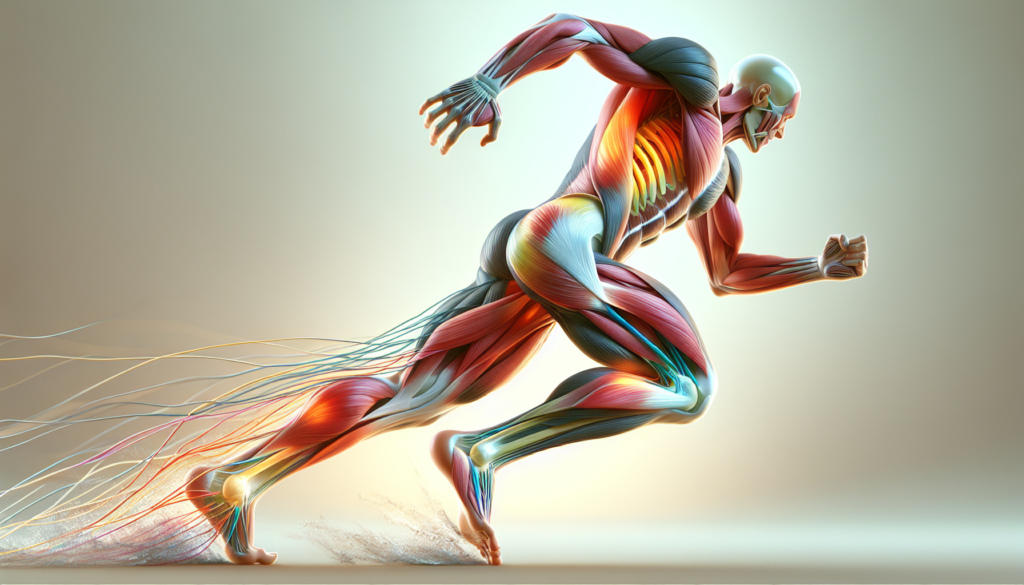
Walking is thus not just a way to get from point A to point B, but a potent tool for maintaining muscle health and reducing the risk of back pain.
But how does walking relate to chronic pain relief? We will investigate this aspect next.
The power of walking extends far beyond muscle maintenance. Walking has been shown to be effective in reducing joints and muscle pain and disability. The benefits are the results of endorphin release and increased oxygen and nutrient delivery to your muscles. That’s right, the act of walking releases endorphins, our body’s natural pain relievers. These endorphins can decrease the perception of pain while also boosting your mood.
Moreover, walking increases your heart rate, which boosts oxygen and nutrient delivery to your muscles. This leads to a potentially decreasing of chronic pain, as your body repairs more quickly.
But in what way does brisk walking address chronic low back pain? Let’s inspect this further.

Brisk walking, in particular, offers specific benefits for both chronic low back pain and chronic back pain. Brisk walking, improves your blood flow, flexibility, and strength in the lower back. This helps prevent or reduces muscle weakness that is associated with chronic low back pain. More impressively, studies have shown that walking can be as effective as conventional physiotherapy treatments for reducing chronic low back pain.
Furthermore, the scientific research shows patient outcomes for pain, fear of movement, and function show more improvement, when walking exercises are combined with physical therapies such as chiropractic or physiotherapy. This combination of walking with physical therapy is more effective than physiotherapy alone. Particularly, in patients with subacute and chronic non-specific low back pain. Plus, as mentioned earlier, the action of brisk walking stimulates the release of endorphins, which can naturally alleviate pain and reduce stress.
But how is improved blood circulation relevant in this context?
Improved blood circulation plays a crucial role in reducing back pain. Walking enhances blood circulation in the lower back muscles, which helps open up constricted blood vessels and capillaries. This increased circulation provides muscles with more nutrients and aids in the healing process.
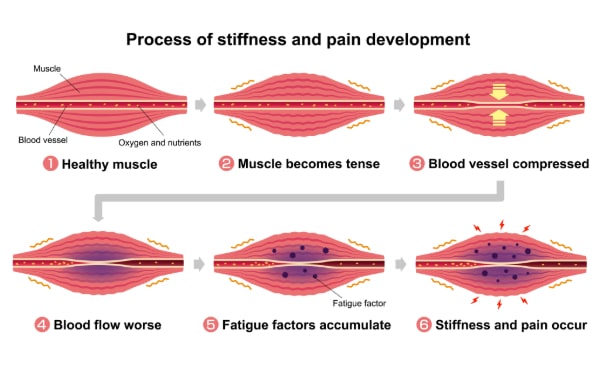
Regular walking stimulates blood circulation, delivering fresh oxygen and nutrients to muscle tissues and removes toxins. This increased blood flow from low-impact activities, like walking, can alleviate general back soreness and discomfort.
But what about the relationship between posture and walking?
The relationship between posture and walking is a crucial one. Maintaining proper posture while walking is critical to:
Adopting a proper walking posture, losing excess weight, and choosing supportive footwear can significantly alleviate lower back pain. Showing the symbiotic relationship between walking and posture. What exactly does mastering proper posture for pain prevention involve?
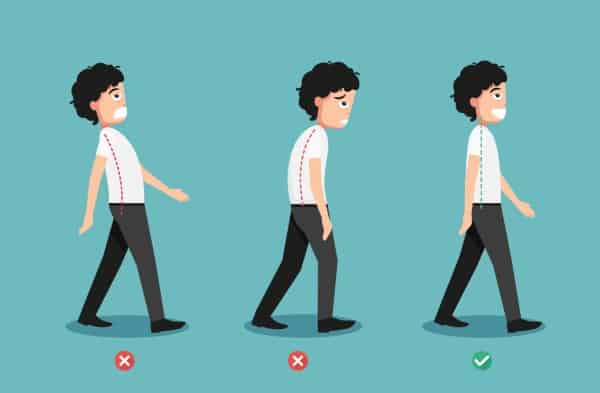
Mastering proper posture is key to preventing back pain. This involves maintaining a neutral spine. A neutral spine is achieved by lifting up through your core, as if you are being lifted up from the crown of your head to the sky. Ensuring your natural lower back length between the lower ribs and your hips. It is important to remember this is achieved by engaging core muscles without tucking the tailbone under or arching your back too much. Check in with your local healthcare provide and they will be able to access your walking posture.
Walking posture, is not just about your lower back. Reducing upper-body tension and promoting freer arm movement is also important. This is achieved by rolling your shoulders up, back, and then down, and by maintaining a pendulum arm swing from the shoulders without crossing the body or lifting higher than the chest.
To further improve your walking posture. You can decrease strain on the upper back and neck by keeping your eyes focused ahead about 5 to 10 metres, rather than looking straight down at your feet. Finally, to minimize impact on your joints and prevent back injuries, ensure you maintain a smooth stride where the feet roll from heel to toe, without landing flat-footed or reaching far out in front.
As you can see, there is a lot to having good posture. Posture is not only about the back, but also involves the core, so it’s important to remember that it’s not your back alone that needs attention.
Core strength is vital in managing back pain. Core strength training is more effective than typical resistance training in reducing chronic low back pain. Exercises targeting the following core areas can help alleviate back pain:

These core exercises reduce stress on the back and enhance blood flow to the surrounding muscles.
Staying physically fit through exercises that maintain strength and flexibility can reduce the discomfort associated with back pain. Meaning back pain does not have to be an inevitable part of aging.
How can we incorporate walking into our daily routines for enduring benefits?
Integrating walking into your daily life can lead to long-term spine health benefits. Here are some tips to get started:
By following these tips, you can improve your back health and enjoy the benefits of walking.
Long-term spinal health benefits are maximized when walking is performed more than three times per week, ideally for 30 to 60 minutes per session. However, the benefits of walking are not limited to back pain. Incorporating regular walking as part of a broader lifestyle change, which includes a healthy diet and mental health improvements, can enhance the benefits walking past the relief of back pain to a more healthy enjoyable lifestyle. Where you experience more energy and more joy every day.
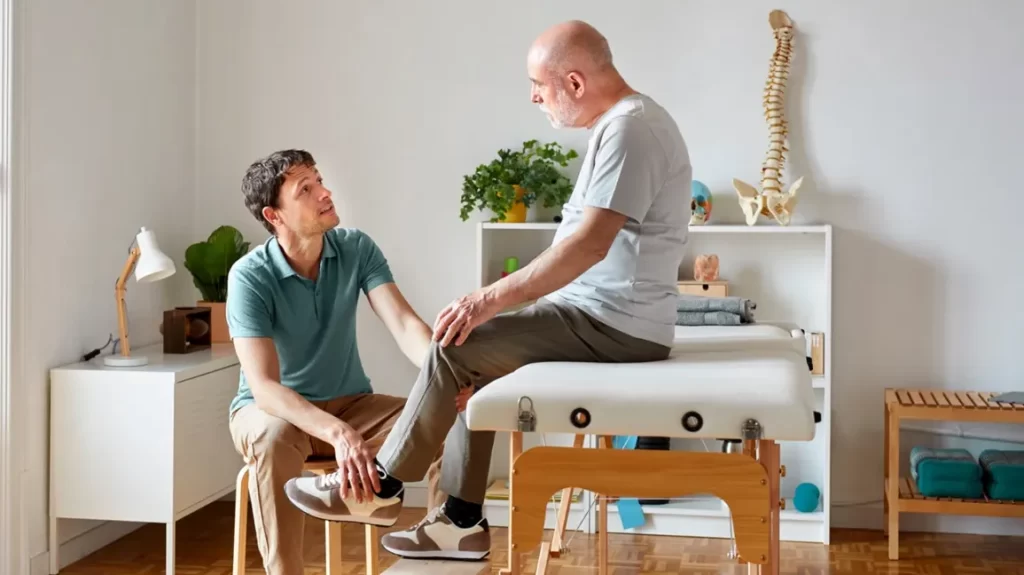
Creating a tailored walking program is key to maximizing the benefits of walking. Everyone begins at a different level, depending on time you have been in pain, your fitness level and your walking posture. The first step is to begin a walking routine by setting achievable goals. We recommend starting with 5 or 10 minutes of easy walking and increasing walk duration based on your current fitness levels and back pain intensity. The other key is to incorporate walking into daily life, by establishing a consistent schedule. Ideally walk at the same time each day, to develop a habit.
Once you have establish a base fitness level. To enhance consistency in walking routines, consider participating in social walks with friends, like park run, or joining a walking group for motivation. Many local communities having walking groups of all levels so you can adjust and personalize your walking amongst a group of supportive people. Remember to start with short, frequent walks and gradually increasing the duration as pain sensitivity decreases, to expand your ‘envelope of function’ without causing pain.
Achieving a balance between walking and rest is critical in managing back pain. When experiencing back pain aggravated by walking, it’s recommended to adopt a strategy of walking little and often, which allows gradual adjustment to physical activity without complete avoidance.
During rest periods, applying heat to the lower back can promote blood flow and assist in alleviating muscle tension, supporting recovery from back pain.
If you have an acute back injury or you have a specific conditions, such as chronic back pain or arthritis, should you see a physical therapist?
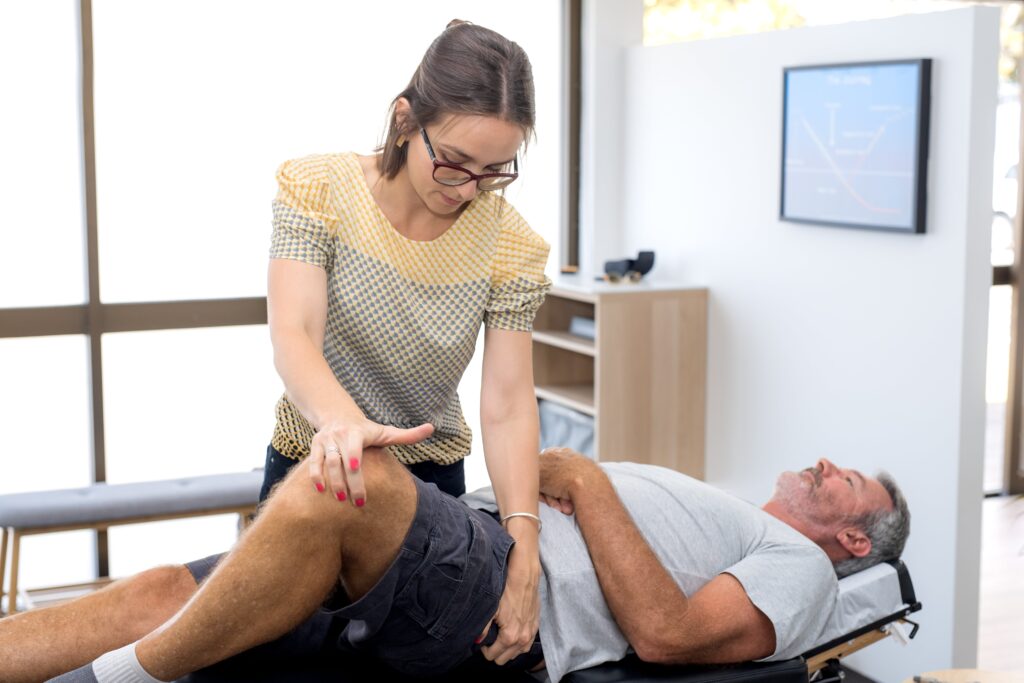
Individuals with specific conditions such as herniated discs and spinal stenosis, or those with acute back injuries should consult a physical therapist before initiating a new walking exercise routine. Persistent back pain, especially when it is worsening or includes symptoms such as numbness or difficulty walking, also warrants professional consultation with a chiropractor, osteopath or physiotherapist.
Early consultation with a chiropractor, osteopath or physiotherapist for spine-related discomforts allows for a thorough examination and accurate diagnosis. Leading to a more effective and tailored treatment plan. Chiropractors, osteopaths and physiotherapists are qualified to diagnose back issues and create personalized treatment plans. They will also treat your spine-related problems using various techniques to alleviate pain and prevent future episodes. They will develop a personalized exercise program aimed at improving the strength and flexibility of your core and back muscles to reduce pain. Providing you a long-lasting solution to your back complaint.
In addition to walking, if you are experiencing lower back pain you should seek personalized treatment from a back pain specialist to enhance the effectiveness of your walking program and help prevent making your pain worse.
If conventional walking leads to discomfort or increased levels of pain, you can consider alternative approaches. Aquatic therapy serves as an alternative walking strategy particularly beneficial for individuals with sensitive back conditions who require a gentler approach. Aquatic therapy is used often in rehab from surgery of backs, hips, knees and ankle. However, aquatic therapy is also useful when recovering from chronic lower back and general back pain.

The buoyancy of water lessens weight and pressure on your spine and joints, aiding in pain reduction and allowing for muscle retraining. With time you can transition from pool based therapy to land base walking and exercise.
Aquatic therapy offers a low-impact exercise option, reducing pain during exercise for those with debilitating lower back pain when traditional walking is too painful. Clinical studies have shown that patients with chronic low back pain, who engage in aquatic therapy experience significant benefits in pain reduction, decreased disability, and improved quality of life.
Recommended aquatic therapy for patients with chronic low back pain usually consists of 60-minute sessions twice a week, that includes aerobic and resistance exercises. Aquatic therapy is often utilized by physical therapists to help patients relearn healthy walking habits in a supportive environment before progressing to walking on dry land.

If you are experiencing back pain or discomfort, choosing the right walking terrain is key to managing your pain and back health. Flat surfaces are typically recommended for walking if your are already dealing with back discomfort. Uneven terrain can place additional stress on your back, which may potentially exacerbate your back pain. Walking on uneven or steep terrain is general recommended once you have built up your back and core muscle strength, as a way to further challenge your lower back stability.
Walking on flat surfaces over varied terrain is generally suggested for better back health and to minimize discomfort caused by a sedentary lifestyle.
Contrary to common misconceptions, walking does not inevitably exacerbate back pain. The correctness of your walking posture can influence discomfort levels. Incorrect walking posture may aggravate your back pain by placing undue stress on your lower back joints, muscles, and discs. Maintaining a correct walking posture involves aligning the head with the shoulders and the shoulders with the hips, engaging the core, and ensuring an even distribution of body weight through each step.
Correct walking posture can reduce pain and discomfort, making walking a beneficial activity for anyone with back pain when performed properly. Having explored the connection between walking and back pain, if you have any questions or would like help developing a walking program, reach out, and we will be happy to assist you.
To sum it up, walking holds the potential to transform your spinal health, offering a non-invasive and widely accessible strategy to combat back pain. The benefits extend from muscle maintenance and pain reduction to improved blood circulation and core strength. Whether you’re stepping out for a brisk walk, mastering your walking posture, or seeking professional consultation, every step you take is a step towards better spinal health. So, lace up those walking shoes and take the first step on your journey to a healthier, pain-free back.
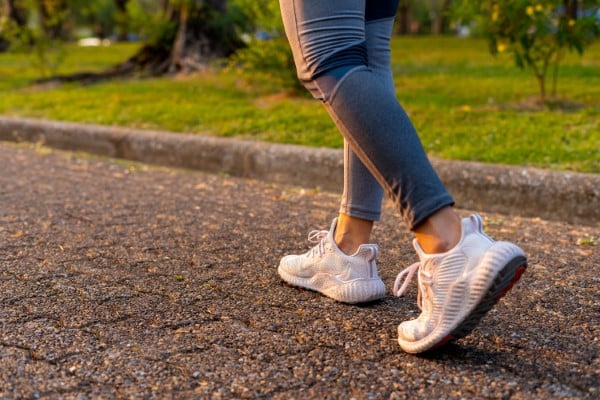
Walking helps combat back pain by engaging your core and back muscles, increasing bone density, maintaining a healthy range of motion in the spine, and contributing to muscle strengthening and flexibility. These benefits help manage and prevent back pain.
Maintaining proper posture while walking ensures even stress distribution and prevents lower back strain by aligning the head, shoulders, and hips. It also engages the core and ensures even distribution of body weight through each step.
The optimal walking pace for managing back pain varies for each person, but a brisk 30-minute walk can help with back pain, lower back pain, weight control and reduce arthritis-related pain.
It’s important to consult a physical therapist before starting a new walking exercise routine if you have specific conditions like herniated discs and spinal stenosis or are suffering from acute back injuries. Persistent or worsening back pain also is a sign that you should have a professional consultation.
Consider trying aquatic therapy, especially if you have sensitive back conditions, and stick to walking on flat surfaces to minimize discomfort. These strategies can help manage back pain.
Forest Lodge, Annandale, Glebe, Leichhardt, Balmain, Haberfield, Canada Bay, Rozelle, Rodd Point, Wareemba, Stanmore, Petersham, Lilyfield, Hunters Hill, Enfield, Cabarita, Mortlake, Rhodes, Burwood Heights, Birchgrove, Gladesville, Huntleys Point, Abbotsford, Ashfield, Croydon Park, Croydon, Chiswick, Russell Lea, Burwood, Strathfield, Concord, Drummoyne, North Strathfield, Liberty Grove, Dulwich Hill, Lewisham, Camperdown, Ashbury, Homebush, Homebush West, Woolwich, Henley, Summer Hill, Sydney Olympic Park
212 Great North Road, Five Dock, NSW 2046
Onsite parking available
Phone: 02 9712 1736
Email: [email protected]

About
Five Dock Osteopathic & Chiropractic is located in Canada Bay, in Sydney’s Inner West. Servicing suburbs including Burwood, Croydon, Drummoyne, Five Dock, Haberfield, Concord, Abbotsford, Chiswick, Leichhardt, Wareemba, Russell Lea, Summer Hill, Strathfield.
Clinic hours
Monday, Tuesday, Thursday 7AM – 7PM
Wednesday, Friday 7AM – 6PM
Saturday 7AM – 2PM
Sunday 8AM – 2PM
Contact details